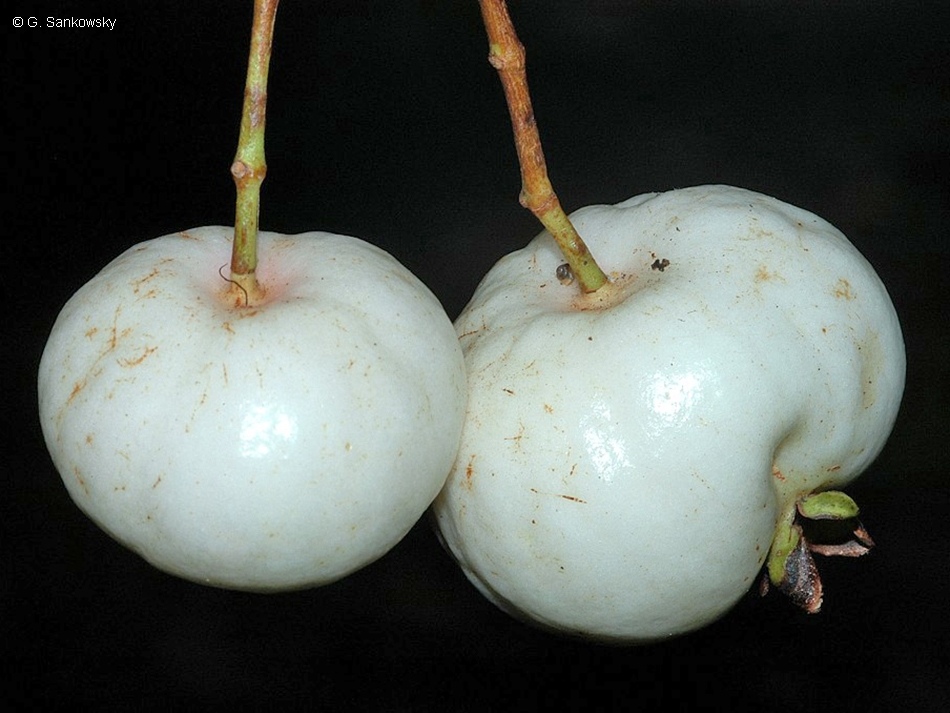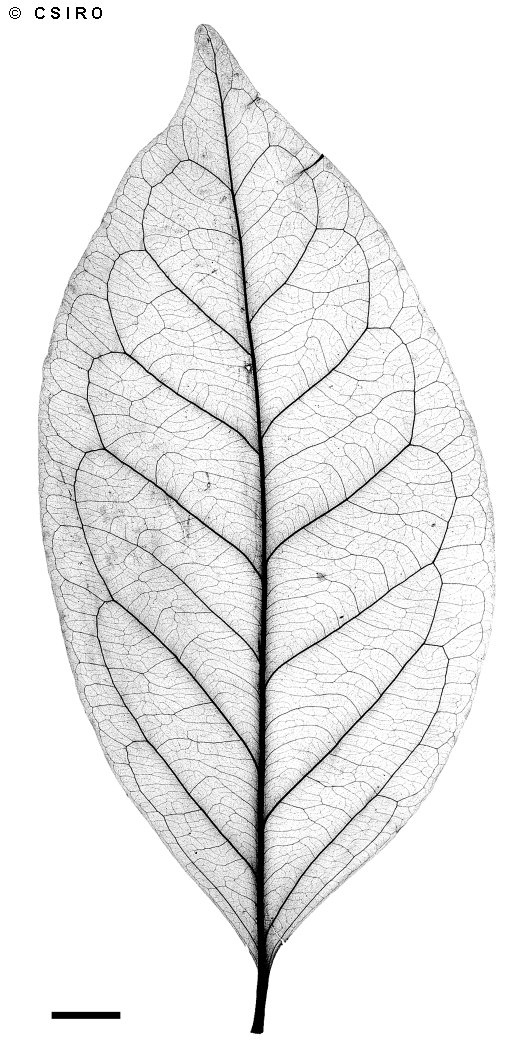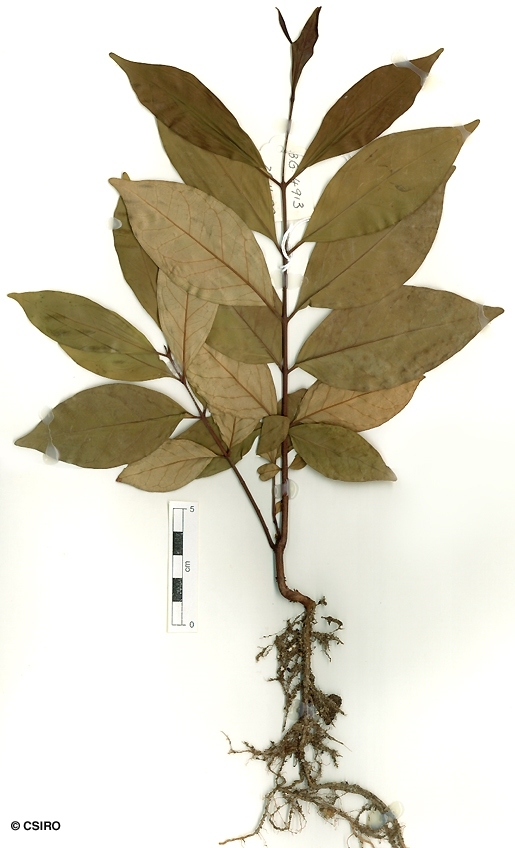Australian Tropical Rainforest Plants - Online edition
Syzygium sharoniae B.Hyland









Hyland, B.P.M. (1983) Australian Journal of Botany Supplementary Series 9: 122. Type: B. Hyland 5992: Portion 62 Alexandra, near Noah Creek, 11.iv.1972 (holotypus QRS).
Seldom exceeding 30 cm dbh.
Leaf blades much paler on the underside, fairly large, about 10.5-15 x 5-7 cm, petioles about 0.7-1 cm long. Oil dots quite numerous but absent from the areas near the midrib and main lateral veins. Midrib depressed on the upper surface.
Bracts deciduous, absent at anthesis. Calyx tube (hypanthium) + pedicel about 7.5-10 mm long, calyx tube (hypanthium) about 5-8 mm diam., calyx lobes conspicuously glandular, dimorphic, inner lobes larger, rounded, about 5-7 mm long. Petals +/- orbicular, concave, about 7-12 mm diam., oil dots visible, about 100 or more per petal. Outer staminal filaments about 25-35 mm long, anthers about 1-1.3 x 0.7-0.9 mm, gland inconspicuous, terminal, on the back of the anther, innermost ring of filaments without anthers. Ovules about 18-24 per locule, placentas central, ovules radiating, ascending. Style about 25-35 mm long, approximating the stamens.
Fruits depressed globular, attaining about 60-70 mm diam., apex excavated, calyx lobes sometimes persistent, about 4-6 mm long. Seed solitary, attaining about 30 mm diam., testa adhering slightly to the spongy or succulent pericarp and also adhering slightly to the somewhat wrinkled surface of the uniformly textured cotyledons. Radicle lateral, cotyledonary stipules absent or inconspicuous.
Endemic to NEQ, restricted to two specific areas, between Cape Tribulation and the Daintree River, and on the upper Mulgrave and Russell Rivers. Altitudinal range from sea level to 600 m. Grows as an understory tree in well developed lowland rain forest.
This species has no commercial value. It never grows large enough to produce millable logs. Wood specific gravity 0.94. The fruit is edible but not particularly tasty. Hyland (1983).





